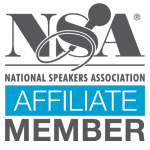There are certain aspects of Super Bowl Sunday considered sacred. Buffalo wings. Prop-bets on wacky in-game scenarios. Critiquing the halftime performance like you could have done it better.
But among the facets of the Super Bowl considered holy by Americana, save for the game – it’s the ads. And along with the demise of Denver’s championship aspirations, on Sunday we may have witnessed the death-rattle of Super Bowl advertising.
The Super Bowl is the only event where viewers actively tune-in to the commercial programming, as corporations dump massive portions of their annual marketing budgets and best ideas into producing top-tier advertising spots. The cost can be monumental, as the going-rate for a 2014 Super Bowl commercial was as high as $4 million for 30-seconds. As such, many companies have attempted to stretch their mileage by releasing them up to a week early on YouTube – which eliminates much of the mystique of the Super Bowl ad-watching experience.
The move is understandable from a business-standpoint, as the economy is still grinding toward a full-recovery, companies are searching for any way to stretch their dollars – especially in the advertising sector. But for your average Super Bowl partygoer, it amounts to sacrilege. The anticipation of the unknown is as ingrained in Super Bowl Sunday as wings and beer, and the ability to view ad spots in advance can ruin the joy of watching.
Things have gotten so expensive that some companies have turned the price-tag into a unique marketing ploy. Esurance ran a commercial after the game’s completion, touting the fact that by purchasing ad-time after the fourth-quarter, they saved $1.5 million dollars – and considering they pride themselves on saving their customers money, by using the hashtag ‘esurancesave30’ they are giving away their savings to one lucky Twitter user.
So what do you think? Do you side with corporate executives attempting to get the most bang for their buck, or do advances of commercials hurt Super Bowl viewership?






Leave a Reply